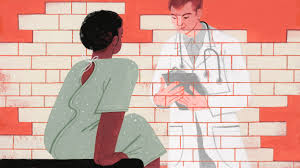
Living in a world where injustice, disparities, and prejudice continues to the forefront of social media, one may think our awareness of our thinking as a society is clouded. Implicit bias is now a subject that has been one of the focal points of social media. Major companies and organizations invest in diversity, equity, and inclusion (DEI) training for their staff. All the new changes are that research shows unconscious bias is directly related to how we interact with others. We will respond differently to others of a different race, sexual orientation, gender, religion, size, etc. As a healthcare professional, my implicit bias can, unfortunately, compromise my professional decisions for my patients.
So, I decided to look into and work on my own biases.
What is an IAT?
The Implicit Association Test (IAT) evaluates the beliefs and attitudes that people may be unwilling or unable to admit. This test also measures the associations that individuals have toward the differences of others. The test is presented for participants to sort pictures and sort words rapidly the refer to “bad” or “good” (Project Implicit, 2011). Therefore, I decided to complete the age and religion IAT.
The Results
At first, I thought the test evaluated hand and eye coordination only. I was slow and tried so hard to avoid making mistakes. It was interesting that my conscious beliefs did not match my implicit thoughts. I was incredibly shocked and confused to find that I have a strong preference for younger people. I’ve always thought I preferred the elderly who, in my opinion, have wisdom and better insight about life in comparison to younger people. I’ve also seen the elderly mistreated by others, and I decided not to treat the elderly with contempt. I felt that my environment played a part in my partiality towards the dominant religion of my region (e.g., United States). My arrogance about other faiths can be contributing to my preference. The scary thing for me is that I can believe that my actions towards an older person or a person of another religious affiliation aren’t derogatory, and it could be without me realizing it.
I remain open to being aware of my preferences. This tool helped activate my awareness, and when I think of my religious intolerance, I think about trying to learn more. Being on the other side of implicit bias is another reason for being super vigilant in stopping my discrimination. My race has caused me to experience microaggressions both in my workplace and when traveling to other communities. Job interviews involved additional questions about my credentials that weren’t necessary. Employers would greet me with hostile facial expressions during our first meeting (e.g., because of my full name some employers assume I am white). There have even been attempts to persuade me to apply to another position instead of the offered leadership position.

As a healthcare professional, I realize that there are times when it is appropriate to use a patient’s race/ethnicity to guide healthcare decisions. For example, decisions related to health literacy, psychoeducational training, language, and communication preferences are essential for specific populations and effective in increasing healthcare outcomes. However, implicit attitudes about race/ethnicity impact clinical decision-making and contribute to health disparities. How? By eliminating the prioritizing of that individual’s value and life. There must be a change in this area of medical care! If not, health disparities will continue.

Recent Comments